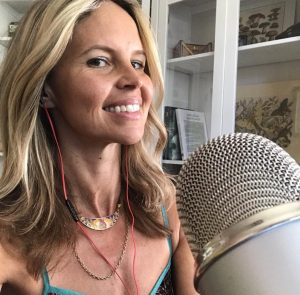Self-talk to Bring More of What You Want Into Your Life
Yes.
YESSSSSSSS!
There is a lot of support out there for saying No.
Saying no prevents you from over giving, overextending yourself.
Saying no allows you to put yourself first.
I’ve begun to look at it another way.
I’ve started saying YES.
It’s more life-affirming. It’s powerfully positive.
It is derived from the old English “gese” or “ge” meaning “may it be so” or “so be it”
The Hebrew word for yes is “ken” with a complex meaning of “established” or “confirmed”
The Proto-Indo-European “es” means “to be”. This unrecorded language is thought to be the root language that all Indo-European languages are derived from.
When you say the word “Yes” your mouth naturally forms into a smile.
Howyou say it is even more important.
Our tone can send messages we don’t intend and it can tell the truth we may be trying to hide.
It’s our tone that others respond to more than the words themselves.
Pitch Can Say More Than Words
The vibration, tone, pitch, and frequency of your voice reveals the state of your consciousness.
Nearly every religious text accepts that speaking is powerfully creative.
Before you utter a word, your internal and external self-draws data from your inner and outer environments to make a decision mediated by your past and present experiences.
That frequency is then communicated through voice and language to create an outcome.
Try this:
- Say the word YES aloud a few times.
- Be mindful of your tone
- Feel how it raises your energy.
- Try the word NO.
- Reframe what you are saying NO to and how you’re saying it.
- Realize that every NO is saying YES to something.
Focus there.
Researchers say that it should not come as a surprise that we are not only affected by the actual words we speak but also how we say them.
The annoyance we detect in the clerk at the grocery stores voice.
A lie we hear in a friend’s tone.
The pitch in our mother’s voice when she is truly present. And the distant lilt when she is not.
The way we can decipher our newborn babies cry.
These are all instances of subtle changes in our speech that can be picked up on automatically and without much thought. Intuitively.
Each one of us has had an experience where something being said with a different tone takes on a different meaning than the words spoken.
A pitch can plain tell us when someone is pissed.
A certain emphasis on a word can hint whether someone is genuine.
Evolution of Our Voice
Stephen Nowicki, professor of Biology at Duke University states,“These subtle characteristics of speech—features of which we are hardly aware—can have a significant impact on our perceptions of a person, even in contexts where we might think these perceptions should be irrelevant. “
Research by Gregory Bryant and Martie Haselton at the University of California, Los Angeles, shows that hormonal changes cause the pitch of a woman’s voice to rise during the point in her menstrual cycle when she is most likely to conceive.
“In an evolutionary sense, then, women with higher voices should be perceived as more attractive, because a high voice is associated with peak fertility on average.” On the other end, as shown in studies by John Archer at the University of Central Lancashire and David Puts at Pennsylvania State University, lower voices in men tend to associate with higher levels of circulating testosterone in the bloodstream, correlating with increased physical and social aggressiveness.
This doesn’t necessarily make this a reality today but studies indicate that at some early point in human evolution, females perceived these qualities positively because they indicated health, good genetics, and the physical ability to defend a mate and offspring from threats.
In one study, research has shown that language evolved as a means for shaping the attitudes and behaviors of communication partners. The spoken language is particularly powerful in this influence because language is the only biological communication system that is truly generative.
“Unlike nonverbal messages, which are limited in number and scope, language comprises a set of arbitrary symbols whose combination allows for an infinite number of potentially complex and abstract messages. Another important fact is that language uses as its vehicle the voice–a communication system already present in our pre-linguistic ancestors.”
Emotion-induced bodily changes affect the functioning of the voice and with that comes the fine-tuning of the rate, intensity, and spectral quality of vocalizations. These regulations also referred to as prosody, add emotional meanings to verbal messages.
Increasing the persuasive power of language even more.
Communicative Intent of Voice
When you speak are you really saying what you mean to say?
For someone to intend something with their speech, it must be the result of a choice. What type of emotions and meanings can people deliberately encode in their voices?
- The linguistic message itself: “a proposition (an utterance with a truth value) perhaps, or a question, or a command.”
- People can also deliberately express emotion; convey social information; express self-image; and regulate conversation.
These also embody different components of communicative intent.
Affective Intent:
This type of intent refers to the attitudes and feelings the speaker is trying to convey. Humans have a sophisticated language and the ability to choose an emotional state with our voice.
For example: Try saying the exact same thing in a friendly tone and then again with an angry tone. You will notice changes occur in your voice and message. One change will be that the angry sentence will be louder, and the overall pitch will be higher.
Social Intent:
It’s easy to assume the primary function of language is to convey cognitive information. But a very important function of language we may not always think about is to signal all the different faces of an individual identity, like our membership of a group within a language community.
“This group can be socioeconomically defined. The idea here, then, is that speakers typically choose to signal their membership of social, ethnic, or regional groups by manipulating aspects of linguistic structure. That is part of what is meant by the social intent sub-part of communicative intent.” (Kersta LG author of ‘Voiceprint identification’.)
Regulatory Intent:
The conversations we have are not aimless or random.
They are structured with our control.
Regulatory intent involves the conventional things you do and say to purposely participate in conversation depending upon your culture. “The conventions underlying conversational interaction in a particular culture are part of the linguistic competence of all speakers who participate in that culture. In traditional Australian aboriginal societies, for example, in contrast to Anglo-Australian culture, it is not normal to elicit information by direct questions.”
This can vary from person to person of course within cultures. We all know someone who says a little too much, or not enough.

Self-Presentational Intent:
Everyone has an idea of the image they want to show to the world and we have the ability to use our voice as a tool to represent an image of ourselves to others.
It something ingrained in us early on. According to research “It is known that little boys and girls, although they are too young to show differences in vocal tract dimensions associated with peripubertal sexual dimorphism, nevertheless choose to exploit the plasticity of their vocal tract in order to sound like (grown-up) males and females. Little boys have been shown to use lower F0 values and little girls higher.”
Using our voice, we can come across as the confident woman, or the insecure woman.
The shy man, or the extrovert life of the party.
All by the voice we choose to project ourselves with.
Healing Power of Sound
“The experience of sound is at the very core of human consciousness, and it can be a powerful tool for healing”, said researcher and Dr. Jeffrey Thompson. For more than 20 years, Dr. Thompson has been exploring neuroacoustics and the therapeutic application of sound. His research has led to the development of precise protocols for using sound to modulate brainwave patterns, affect sympathetic-parasympathetic balance, and synchronize the activity of the right and left-brain hemispheres. He has applied these methods in stress reduction, cardiovascular disease prevention, management of depression, and a host of other conditions.
“Using sound in these ways, it is possible to make profound changes in brainwave patterns and states of consciousness, observable on brainwave mapping equipment (EEG), as well as positive changes in the body, measurable with blood tests, biofeedback equipment and other sophisticated procedures. We are also able to influence the core balance and functioning of the brain and central nervous system as a whole,” said Dr. Thompson.
The YES Meditation
When I’m feeling stressed or uncertain or even down, I do this simple meditation, and it helps to shift how I feel in my whole body:
- Sit comfortably with your eyes open.
- Notice everything in your surroundings. The light, textures, scents.
- Focus on how you feel and sense your pace within that.
- Inhale easily and comfortably and on the exhale say “yes” out loud.
- Say it again and draw out the ending “esssss.”
- Accentuate the smile your mouth forms at the end. Its OK to fake it.
- Think about what you want to say yes to that is the counterbalance of what you need to say no to.
Repeat.
Be Mindful of Your Inner Voice
My experiences have become more meaningful since I have shifted to saying YES and been mindful ofhowI’m saying it.
All of them.
Hard times are more bearable, and easier to discern the lesson from.
I like calling things forth into my life.
I like establishing good; abundance, and joy. How about you?
I say yes to LOVE.
Love is self-care. Love is affection. Love is following and seeking truth.
Love is the giving of yourself.
Love is hearing yourself and liking what you hear.
Love is accepting what you need from others.
Love is speaking honestly to yourself and others.
Join the love @ Love is Medicine
References:
- Borkowska, B., and B. Pawlowski. 2011. Female voice frequency in the context of dominance and attractiveness perception.Animal Behavior82:55–59.
- Bryant, G. A., and M. G. Haselton. 2009. Vocal cues of ovulation in human females.Biology Letters5:12–15.
- https://scientificsounds.com/index.php/library/the-clinical-use-of-sound
- https://www.ncbi.nlm.nih.gov/pmc/articles/PMC3361773/
- https://www.ncbi.nlm.nih.gov/pmc/articles/PMC3361774/
- https://www.ncbi.nlm.nih.gov/pmc/articles/PMC2821399/
 Razi Berry is the founder and publisher of the journal Naturopathic Doctor News & Review, which has been in print since 2005, and the premier consumer-faced website of naturopathic medicine, NaturalPath. She is the host of The Natural Cancer Prevention Summit and The Heart Revolution-Heal, Empower and Follow Your Heart, and the popular 10 week Sugar Free Summer program. From a near death experience as a young girl that healed her failing heart, to later overcoming infertility and Chronic Fatigue Syndrome and Fibromyalgia through naturopathic medicine, Razi has lived the mind/body healing paradigm. Her projects uniquely capture the tradition and philosophy of naturopathy: The healing power of nature, the vital life force in every living thing and the undeniable role that science and mind/body medicine have in creating health and overcoming dis-ease. Follow Razi on Facebook at Razi Berry , join her Love is Medicine group to explore the convergence of love and health, and find more Love is Medicine podcast episodes here.
Razi Berry is the founder and publisher of the journal Naturopathic Doctor News & Review, which has been in print since 2005, and the premier consumer-faced website of naturopathic medicine, NaturalPath. She is the host of The Natural Cancer Prevention Summit and The Heart Revolution-Heal, Empower and Follow Your Heart, and the popular 10 week Sugar Free Summer program. From a near death experience as a young girl that healed her failing heart, to later overcoming infertility and Chronic Fatigue Syndrome and Fibromyalgia through naturopathic medicine, Razi has lived the mind/body healing paradigm. Her projects uniquely capture the tradition and philosophy of naturopathy: The healing power of nature, the vital life force in every living thing and the undeniable role that science and mind/body medicine have in creating health and overcoming dis-ease. Follow Razi on Facebook at Razi Berry , join her Love is Medicine group to explore the convergence of love and health, and find more Love is Medicine podcast episodes here.

















